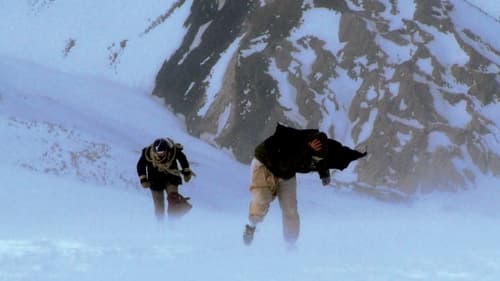
Writer
A group of archaeologists from the University of the Republic enters, for the first time in Uruguayan history, into a barracks to dig for the remains of persons imprisoned-disappeared during the military dictatorship. Only one year earlier, not even the boldest observer would have dared predict such a possibility. After one hundred days of digging, the earth reveals its secret: the first remains appear. The documentary reconstructs the process that cuts the country’s history in two: before and after.

Director of Photography
In 1971, Uruguayan journalist and writer Eduardo Galeano published his landmark work Open Veins of Latin America, in which he comprehensively described the centuries of economic exploitation of Latin America. Almost 40 years later, filmmaker Gonzalo Arijon reevaluates the situation. His search takes him from the soybean plantations of the Brazilian Amazon to the tin mines of Bolivia to the deep jungles of Ecuador. Arijon’s politically committed film allows the local populations to speak for themselves, interspersing this with archival footage of speeches by Hugo Chávez, Lula da Silva and Evo Morales. Galeano himself also speaks—sometimes in poetic language— about how the rise of socialist governments in the early 21st century is benefitting Latin America, and what more can be done.

Screenplay
In 1971, Uruguayan journalist and writer Eduardo Galeano published his landmark work Open Veins of Latin America, in which he comprehensively described the centuries of economic exploitation of Latin America. Almost 40 years later, filmmaker Gonzalo Arijon reevaluates the situation. His search takes him from the soybean plantations of the Brazilian Amazon to the tin mines of Bolivia to the deep jungles of Ecuador. Arijon’s politically committed film allows the local populations to speak for themselves, interspersing this with archival footage of speeches by Hugo Chávez, Lula da Silva and Evo Morales. Galeano himself also speaks—sometimes in poetic language— about how the rise of socialist governments in the early 21st century is benefitting Latin America, and what more can be done.

Director
In 1971, Uruguayan journalist and writer Eduardo Galeano published his landmark work Open Veins of Latin America, in which he comprehensively described the centuries of economic exploitation of Latin America. Almost 40 years later, filmmaker Gonzalo Arijon reevaluates the situation. His search takes him from the soybean plantations of the Brazilian Amazon to the tin mines of Bolivia to the deep jungles of Ecuador. Arijon’s politically committed film allows the local populations to speak for themselves, interspersing this with archival footage of speeches by Hugo Chávez, Lula da Silva and Evo Morales. Galeano himself also speaks—sometimes in poetic language— about how the rise of socialist governments in the early 21st century is benefitting Latin America, and what more can be done.

Writer
Ésta es una de las historias de supervivencia más extraordinaria de todos los tiempos: es la historia de un grupo de jóvenes que lograron sobrevivir durante 72 días a una altitud de 4.000 metros, en el corazón de la cordillera de los Andes, después de que su avión se estrellara allí en Octubre de 1972. El accidente de avión, las muertes, los heridos. Los equipos de rescate que nunca aparecían. El desaliento. El hambre que se apodera lentamente de ellos. La decisión de alimentarse de los cuerpos de sus amigos fallecidos en el accidente. Las avalanchas. El esfuerzo sobrehumano para no rendirse, para no dejarse morir. Allí arriba, en la montaña, una nueva sociedad tomó forma: no había líderes, solo una sucesión gradual de personalidades a medida que los acontecimientos se precipitaban y que soñaban en alcanzar una meta común: salir de ese infierno y volver juntos a la vida.

Director
Ésta es una de las historias de supervivencia más extraordinaria de todos los tiempos: es la historia de un grupo de jóvenes que lograron sobrevivir durante 72 días a una altitud de 4.000 metros, en el corazón de la cordillera de los Andes, después de que su avión se estrellara allí en Octubre de 1972. El accidente de avión, las muertes, los heridos. Los equipos de rescate que nunca aparecían. El desaliento. El hambre que se apodera lentamente de ellos. La decisión de alimentarse de los cuerpos de sus amigos fallecidos en el accidente. Las avalanchas. El esfuerzo sobrehumano para no rendirse, para no dejarse morir. Allí arriba, en la montaña, una nueva sociedad tomó forma: no había líderes, solo una sucesión gradual de personalidades a medida que los acontecimientos se precipitaban y que soñaban en alcanzar una meta común: salir de ese infierno y volver juntos a la vida.

Screenplay
We follow the efforts of Ester Gatti to find her missing granddaughter Mariana Zaffaroni. As a child, Mariana and her parents were kidnapped by a Uruguayan military team. The little girl was taken by an agent in the intelligence service who brought her up as his own daughter. Sixteen years later Ester found Mariana, but the girl chose to go on living with the people who had kidnapped her. This documentary raises questions about identity, memory and the value of truth.

Director
We follow the efforts of Ester Gatti to find her missing granddaughter Mariana Zaffaroni. As a child, Mariana and her parents were kidnapped by a Uruguayan military team. The little girl was taken by an agent in the intelligence service who brought her up as his own daughter. Sixteen years later Ester found Mariana, but the girl chose to go on living with the people who had kidnapped her. This documentary raises questions about identity, memory and the value of truth.







